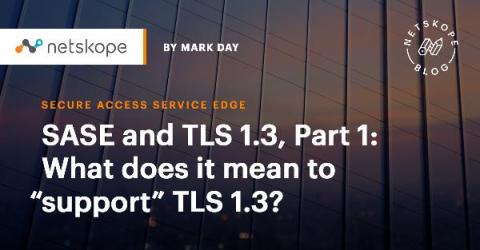SASE and TLS 1.3, Part 1: What does it mean to "support" TLS 1.3?
TLS is the most important protocol for secure communication with web sites and cloud services. Any vendor with ambitions in the SASE (Secure Access Service Edge) market has to be able to proxy TLS at scale. That requires considerable sophistication in terms of designing the computing and networking infrastructure for a SASE “security cloud,” but it also requires attention to the details of TLS itself.









